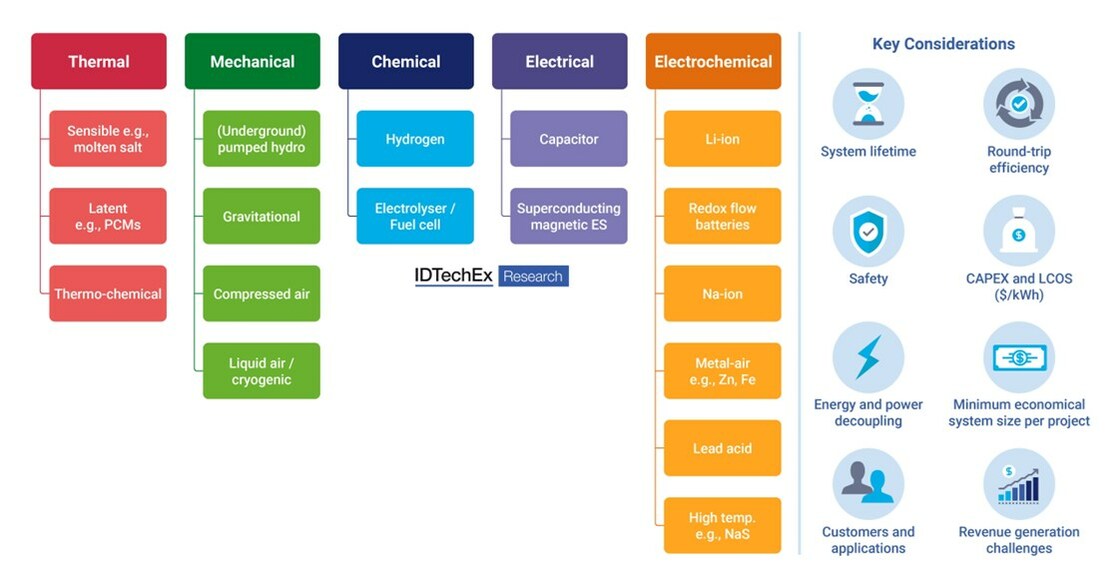In response to the escalating integration of variable renewable energy (VRE) sources into global electricity grids, the demand for effective long duration energy storage (LDES) technologies is on the rise. According to IDTechEx’s latest market report, ‘Long Duration Energy Storage Market 2024-2044: Technologies, Players, Forecasts,’ projections indicate a global installation of 1.4 TWh of LDES by 2044, underscoring the critical role these technologies will play in supporting grids with higher VRE penetrations.
Diverse Landscape of LDES Technologies
An array of LDES technologies, including electrochemical, mechanical, thermal, and hydrogen storage, is currently under development and commercialization across various regions. With approximately US$4.0 billion invested by private, public, and government sectors, these technologies aim to offer cost-effective solutions compared to traditional lithium-ion batteries.
Potential Economical Advantages
Many emerging LDES technologies boast potential cost advantages over lithium-ion batteries on a $/kWh basis. Utilizing cheaper materials and innovative designs that enable energy and power decoupling, systems like redox flow batteries (RFB), liquid-air, compressed-air, and underground pumped hydro storage, alongside certain zinc battery configurations, are poised to exhibit reduced CAPEX at longer storage durations.
Future Market Dynamics
Predicting the dominance of specific LDES technologies remains challenging due to limited commercial-scale deployments. However, factors such as round-trip efficiency, cycle-life, and energy density will significantly influence market penetration. Mechanical energy storage systems are anticipated to emerge as primary contributors to LDES, particularly in capacities exceeding 100 MW.
Overcoming Deployment Barriers
Despite promising advancements, widespread adoption of LDES technologies faces barriers, notably the necessity for longer-term revenue visibility. Regulatory reforms and enhanced revenue generation mechanisms are imperative to bolstering investor confidence and accelerating technology deployment. However, significant demand acceleration is not expected until the mid-2030s, with global adoption projected by ~2040, contingent upon VRE penetration rates.
Source:prnewswire.com





